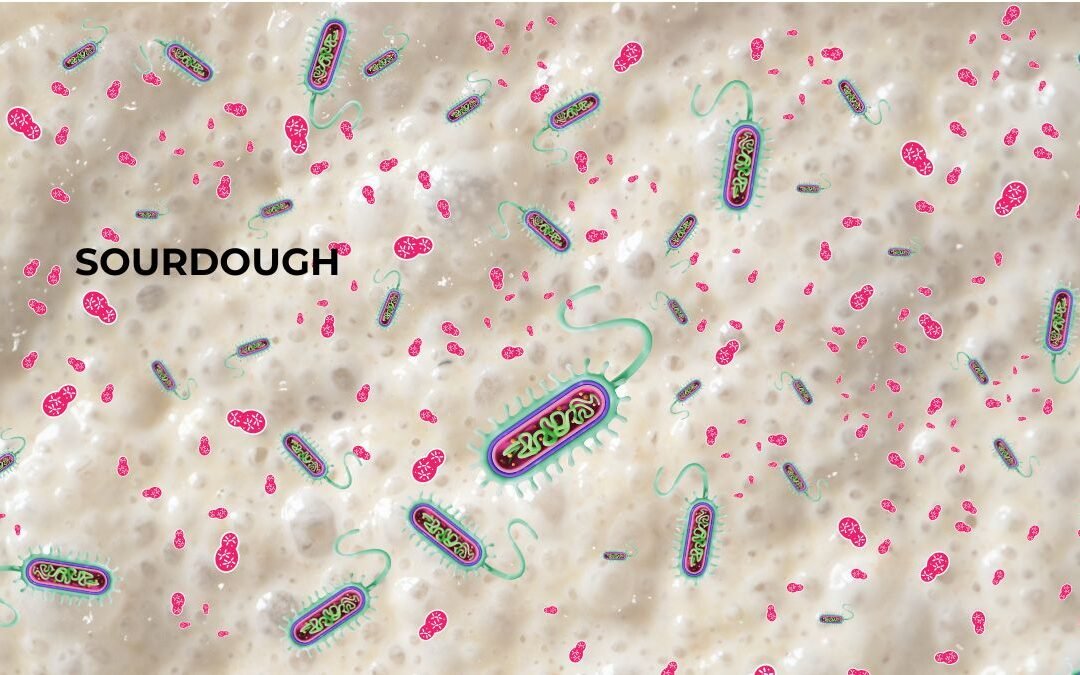Understanding the symbiosis between yeast and bacteria is the secret to elevating your baked goods. Though invisible, these two “peoples” collaborate in a dialogue that defines the soul of a great leavened cake. In this guide, we will analyze this relationship to learn how to become its conscious custodians, whether using a stiff or liquid sourdough starter.
The Protagonists of the Dialogue: Two Peoples, Two Roles
To understand symbiosis, we must first recognize the two “peoples” inhabiting our ecosystem. They have different natures, timings, and languages.
- The Yeasts (Saccharomyces): The Architects.
They are complex eukaryotic organisms. Their vocation is expansion. They feed on simple sugars and produce carbon dioxide (CO₂), which inflates the gluten network, creating volume and structure. They are the tireless builders of the cathedral. - The Lactic Acid Bacteria (Lactobacillus – LAB): The Poets.
They are ancestral prokaryotic organisms. Their vocation is transformation. By producing organic acids, they don’t create volume but the terroir of the dough: the flavor, aromatic depth, and shelf life. They are the chanters who breathe soul into the cathedral.
The Symbiosis Between Yeast and Bacteria: A Collaborative Pact
In a straight dough with commercial yeast, the architects work alone, quickly building a simple structure. But in a great leavened cake, with fermentations lasting hours or days, such a structure would collapse.
This is where the symbiotic pact comes into play:
- Lactic Acid Bacteria protect the Yeasts: By producing acids, LAB lower the pH and create a “protective shield” that inhibits mold and other undesirable microbes. This allows the yeasts to work slowly and safely.
- Yeasts (indirectly) feed the Bacteria: During their activity, yeasts and flour enzymes make sugars and other compounds available, which become nourishment for the bacteria.
This is not mere coexistence; it’s a self-regulating and self-protecting ecosystem.
The Dual Reading in Great Leavened Cakes
In a Panettone, this symbiosis reaches its peak.
- The Scientific Reading (The Structure): A perfect balance between LAB acidity and yeast activity allows the gluten to strengthen, becoming capable of supporting the weight of candied fruits and fats without collapsing.
- The Philosophical Reading (The Soul): The true aromatic complexity of a great leavened cake is born from the slow dialogue between poets and architects. Time is not just a variable; it is the space where this conversation happens.
The Role of the Custodian: Becoming the Mediator
Faced with this complexity, our role changes. We are no longer bakers; we become custodians. Our task is to create the ideal conditions (temperature, hydration, flour choice) for this dialogue to occur harmoniously.
A great leavened cake is not the triumph of yeast’s strength, but the masterpiece of a perfectly governed symbiosis between yeast and bacteria.
With Passion and Rigor,
Katia Oldani, Biologist Pastry Chef
Click here to Visit My YouTube Channel
For any information or contact CLICK HERE


